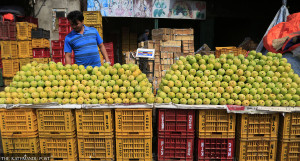Money
Bee tourism can create plenty of buzz
Beekeeping or apiculture has always been an important income generating activity in many places, particularly in the rural hill and mountain regions. And this activity could be transformed into bee tourism or ‘apitourism’, a move that could have a large impact at the village levels, bee farmers and concerned stakeholders said.
Chandra Karki
Beekeeping or apiculture has always been an important income generating activity in many places, particularly in the rural hill and mountain regions. And this activity could be transformed into bee tourism or ‘apitourism’, a move that could have a large impact at the village levels, bee farmers and concerned stakeholders said.
They said that Nepal’s unique apiculture with a long beekeeping tradition can be developed as a new form of tourism, to offer a new kind of holiday experience with a positive impact on people and the environment.
Tourists can enjoy delicious home-made honey and at the same time learn about the history, tradition and culture of beekeeping.
Shiva Prasad Sharma, president of the Federation of Nepal Beekeepers, said that apiculture could be a good medium not only to generate income by selling honey but to potentially attract eco-conscious travellers.
The government has also accorded priority to promote bee tourism in selected districts where tourists visit the most. Such districts need proper transportation facilities along with traditional bee rearing and homestay facilities. But it has not been promoted effectively.
Though honey is listed as a high-value exportable product, exporting them is always a problem due to lack of accredited laboratory to check its standard, said Devi Dahal, vice president of the federation. There are also many other bee products like sweet honey drinks and candles made from beeswax which has not been promoted well.
Krishna Adhikari, a bee farmer in Jhapa, said that Apitherapy, a new form of alternative medicine could also be promoted. It’s a homeopathy that uses the aromas from the beehive and helps in curing asthma and other respiratory problems.
“There are many villages which have the potential to become apitherapy centres,” he said. According to government statistics, honey production has been declining by 20 percent annually due to the rampant use of pesticides.
Farmers also bemoan the lack of access to government measures such as the distribution of Chiuri (butter tree) plants—which is a rich source of nectar for bees, claiming that while they have heard of such initiatives, it has not yet materialised for many farmers.
Widespread use of pesticides has been leading to the decimation of wild bee colonies. According to Rajendra Prasad Gautam, former president at the federation, the pesticides used in commercial agriculture have resulted in a significant decline in the population of wild bees.
In addition, deforestation and destruction of entire colonies during the honey harvest are other factors for the decline of bee colonies. Since bees are one of the most important insects that transfer pollen between flowers and plants, a decline in their numbers could affect food production and human livelihoods.
It is said that bees are responsible for one out of every three bites of food we eat. According to the Agriculture and Consumer Protection Department of the Food and Agriculture Organisation of the United Nations, the total worth of global crops with honeybee’s pollination was estimated to be close to $200 billion in 2005.
Pollination is the transfer of pollen from the male parts to the female parts of a flower of the same species, which results in fertilisation of plant ovaries and the production of seeds.
Bees make excellent pollinators because most of their lives are spent collecting pollen, a source of protein that they feed to their developing offspring.
When a bee lands on a flower, the hairs all over its body attract pollen grains through electrostatic forces. According to the federation, there are 170,000 colonies of the Apis cerana and Apis mellifera bee species. Farmers have been rearing cerana for many years.
The mellifera species produces 50-60 kg of honey a year. Similarly, local cerana species can produce 25-30 kg of honey annually, according to the government data.
Production of honey is high during the mid-September to mid-December and mid-February to mid-May due to flowering season, farmers said.
According to Beekeeper Development Section in Godavari, Lalitpur, farmers in Mude and Khape have has been rearing 39,168 colonies of the bee at traditional hives. Similarly, 60,000 colonies are being reared in modern hives.




 21.89°C Kathmandu
21.89°C Kathmandu














